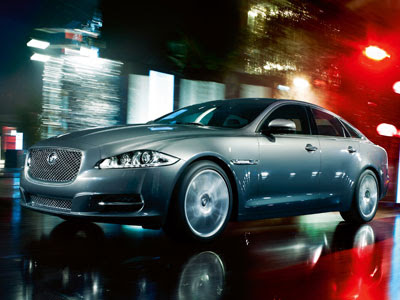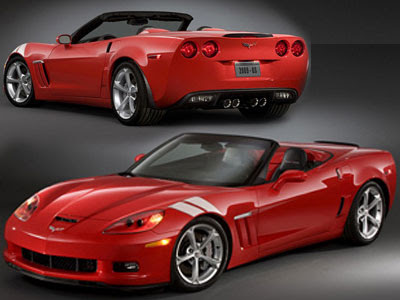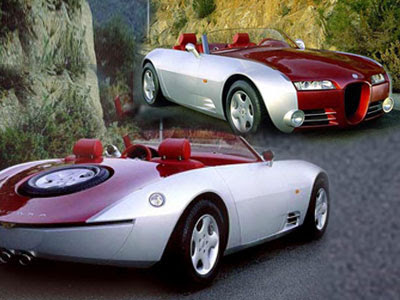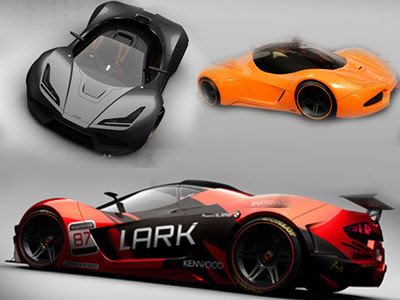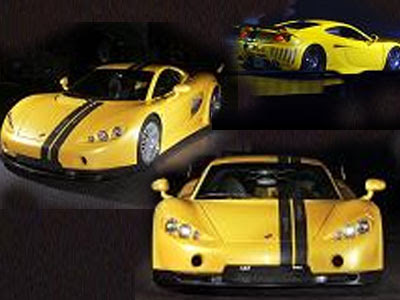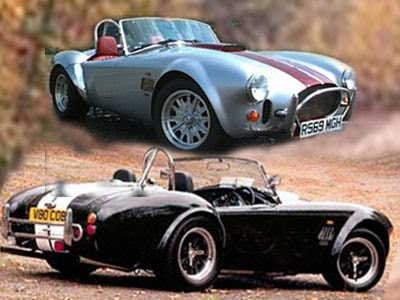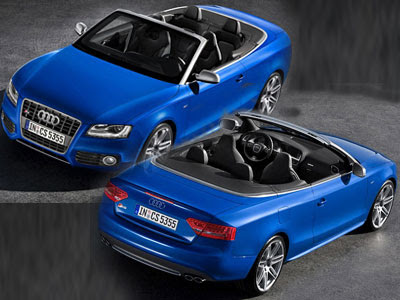|
|
|---|
Saturday, October 31, 2009
Chevrolet Camaro SS Hendrick Motorsports 25th Anniversary Eaton TVS Supercharger The limited edition
0 comments Posted by gun at 12:49 AMAnother one comes from Hendrick Motorsports, which is celebrating its 25th anniversary. Hendrick will be rolling out 25 of these fully loaded SS Camaros, with each having a price tag of $76,181.
Hendrick Motorsports, a NASCAR racing organization has commissioned Callaway Cars to develop and build a limited edition run of Hendrick Motorsports 25th Anniversary 2010 Camaro SS vehicles. The 25th anniversary Camaro will include a host of engine, body and interior modifications.
Under the hood power hasbeen increased from 426 to 582 by way of Callaway's Eaton TVS series supercharger, high-flow air filtration system, low-restriction exhaust system and engine tune.

with some engine management tuning as well as a new air filter and sport exhaust system.The suspension has also been upgraded with Callaway coil springs,shock absorbers and anti-roll bars. Keeping the power firmly mounted to the road is a set of new Callaway wheels.The suspension has also been upgraded with Callaway coil springs, shock absorbers and anti-roll bars.
Keeping the power firmly mounted to the road is a set of new Callaway wheels.This very exclusive Hendrick Motorsports vehicle is pricey but there are bound to be enthusiasts willing to part with their cash for this collector’s item.
The limited edition model will be tagged inside and out with 25th Anniversary badges for the silver Camaro SS. The 25 cars will be made available for sale after the SEMA show through Jimmie Johnson Chevrolet of San Diego, California and three Hendrick Chevrolet dealerships in North Carolina, Georgia and Kansas.
Labels: Camaro SS, Chevrolet, Chevrolet Camaro, Spors Car
Monday, October 26, 2009
2010 Jaguar XJL Super Sports Car a New generation Supercharged 5-liter V-8 of three choice engines
0 comments Posted by gun at 11:38 AMThe first impression of the all new XJ is its visual assertiveness. The XJ's sleek lines are complemented by a taut waistline, which further accentuates the impression of length and elegance, and creates a natural tension as it fades from the front arch into the middle section of the car before reappearing as a strong haunch towards the rear.
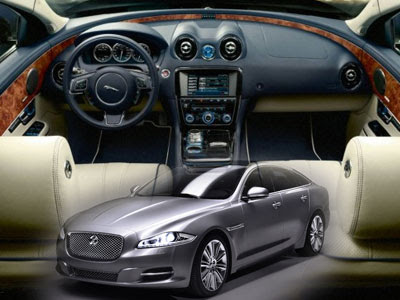 2010 Jaguar XJL Super Sports Car
2010 Jaguar XJL Super Sports CarA standard panoramic glass roof is an integral part of the all new XJ's design, enabling the car to have a lower, more streamlined roofline, while dramatically enhancing the feeling of light and space inside. The LED light clusters wrap stylishly over the rear fenders, and feature three dramatic red vertical strips while the elongated teardrop shape of the side windows establishes the car's silhouette. The rear of the all new XJ is notable for its pure, sculpted shape. With a conscious absence of ornamentation, the rear features only a single leaping Jaguar.
The face of the all new 2010 XJ is confident, with a wide front track and short overhang contributing to the finely judged proportions. The nose of the car follows Jaguar's new design language with a bold and assertive treatment – the powerful mesh grille and slim xenon headlights create a strong road presence while the wrap-around rear screen reduces the visual weight of the pillars and gives the impression of an exotic 'floating' roof.
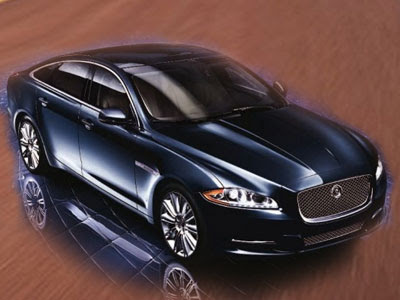 2010 Jaguar XJL Super Sports Car
2010 Jaguar XJL Super Sports CarThe all new XJ's cabin is a marvel in its own right, blending elegant, contemporary design with the comfort, luxury and unmistakable sporting style of a Jaguar. Chrome and piano black detailing provide an eye-catching contrast to the beautifully crafted leather and veneer surfaces. To further complement the cabin design is a level of choice in colors, veneers and leathers not seen before in a Jaguar. Four specification levels – XJ, XJL, Supercharged and Supersport – allow the customer to tailor the car to suit their tastes. The top-of-the-range Supersport provides the ultimate expression of performance and luxury, with a specification that includes a leather headlining, semi-aniline leather seats and veneers with laser inlays.
Stunning, 12.3-inch high-definition Virtual InstrumentsTM complement an innovative 8-inch Touch-screen that displays vehicle functions ranging from audio and video to navigation and climate control. Premium surround sound options include the top-of-the-range 1200W Bowers & Wilkins system, which is standard on the Supercharged and Supersport models. Advanced infotainment features also include hard drive-based audio and navigation systems, and comprehensive connectivity for portable audio and video devices via the powerful Media Hub.
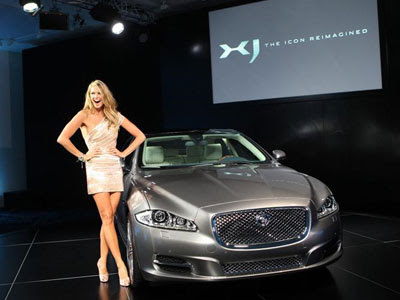 2010 Jaguar XJL Super Sports Car
2010 Jaguar XJL Super Sports Car The new XJ will be available in the US with a choice of three engines – a 5.0 liter 385hp naturally aspirated V8, 5.0 liter 470hp supercharged V8 and a 5.0 liter 510hp supercharged V8. In naturally-aspirated form, the XJ develops 380 lb.-ft. of torque. The supercharged versions develop 424 lb.-ft. and 461 lb.-ft. of torque, respectively. All three engines combine deft performance, unparalleled character, peerless pedigree, and have a classic Jaguar blend of strength and precision.The all new 2010 Jaguar XJ delivers a driving experience that is just as memorable as the car's sleek and alluring appearance, combining responsive, sporting dynamics with the luxurious drive expected from a Jaguar.
Labels: Jaguar.Sports Car', Sedan, Super Sports Car
Dacia SHIFT Concept a New Innovative Concept Car powered by lithium-ion or hydrogen fuel cells.
0 comments Posted by gun at 10:24 AM Dacia SHIFT Concept 2012.
Dacia SHIFT Concept 2012. Dacia SHIFT Concept 2012.
Dacia SHIFT Concept 2012.The Dacia SHIFT Concept will be powered with the help of lithium-ion batteries and can also accommodate hydrogen fuel cells. Dacia Shift is a concept keeping the needs of the young Bucharest residents in mind, which will not exceed the stage of drawing and sketch, as it being an independent project with no official connection with the Dacia brand.
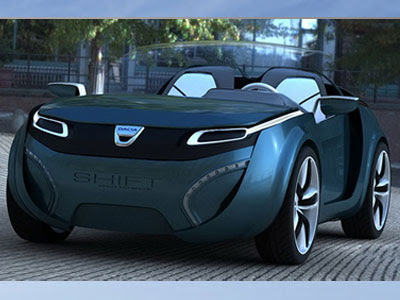
Labels: Concept Car, Dacia, Design Car, Electric Car, Hidrogen Full Cell
Morgan Aero SuperSports 4.8 liter BMW V8 engine Is a Luxurious Flamboyant Sports Car.
0 comments Posted by gun at 8:34 AM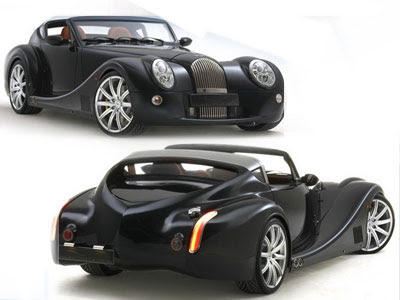 Morgan Aero SuperSports
Morgan Aero SuperSportsAs part of the Centenary celebrations Morgan announces a truly special model.Designed and engineered in house, the Morgan Aero SuperSports is a lightweight aluminum sports car with a luxurious specification. The interior features a comfortable combination of polished hardwoods, hand stitched leather and electronic technology to create a driving environment that is efficient, ergonomic and sumptuous. In spite of all this opulence the overall weight of the car is still minimal so the car is responsive to driver inputs and economical to run. The unique way Morgan can achieve this is down to our use of aircraft style superformed aluminum outer panels and the skills of our craftsmen to hand finish the assembly of each car.
 Morgan Aero SuperSports
Morgan Aero SuperSportsThe car of course benefits from the lightweight aluminum Aero chassis which is adhesively bonded for class leading rigidity. Exceeding global crash protection standards, this is also the platform used by the Morgan Aero Eight GT3 currently competing successfully in the 2009 International FIA GT3 Championship. This chassis combined with the aluminum 4.8 liter BMW V8 engine and a choice of 6 speed automatic or manual gearboxes offers an unrivalled driving experience. No other automatic car offers such dynamic power transmission.
Drawn by Matthew Humphries, and engineered for production by the experienced “Morgan Design” team, the new Aero Super Sports is due to enter production in early 2010. A deposit of £25,000 is required to ensure the supply of one of these exciting new models. It is anticipated to cost around £127,000 including VAT.Charles Morgan, Grandson of the founder said “ The Morgan Aero SuperSports is a luxurious flamboyant sports car which also remains true to Morgan’s philosophy of lightweight minimalist simplicity. It is a celebration of our love of cars and the romance of travel and is a fitting model to announce during Morgan’s Centenary year”.
Labels: Morgan, Spors Car, Sport Car Coupe, Super Sports Cars
Friday, October 16, 2009
The Corvette Grand Sport is available in both coupe and convertible body styles, with either a six-speed manual or six-speed automatic transmission. The LS3 6.2L engine is rated at 430 horsepower (321 kW) and 424 lb.-ft. of torque (575 Nm) with the standard exhaust system. An optional two-mode exhaust system raises the power output to 436 horses (325 kW) and 428 lb.-ft. (580 Nm).
The 2010 Chevrolet Corvette Grand Sport which was introduced at the 12th annual C5/C6 Corvette Birthday Bash, held at the National Corvette Museum, in Bowling Green, Ky. combines the Corvette’s LS3-based powertrain with unique, wide-body styling and a racing-derived suspension.

The Grand Sport replaces the Corvette’s previous Z51 package and brings a greater degree of handling performance, with wider wheels and tires; revised shock, stabilizer bar and spring specifications; and specific gearing. The equipment enables cornering capability of 1.0 g, as well as a 0.2-second improvement in 0-60 acceleration over the standard .
With its special equipment, the Corvette Grand Sport offers a unique blend of performance and amenities. Its suspension package approaches that of the Z06, but includes a removable roof on coupes (Z06 has a fixed roof) and, of course, the availability of a convertible body style. Also, the paddle-shift six-speed automatic transmission is offered, while a manual transmission is the only choice with the Z06. Essentially the Grand Sport sits somewhere between the standard C6 Corvette and the Z06 Corvette for performance and comfort.
Corvette Grand Sport coupe models equipped with the manual transmission are uniquely outfitted for race track competition, too, with a dry-sump oiling system, differential cooler and a rear-mounted battery - this is the model you want to go for, otherwise you're wasting your money and may as well get the standard model.
Labels: Chevrolet, RacingCar, Sport Car, Sport coupe
Thursday, October 15, 2009
The Yamaha OX99-11 was a supspercar designed by IAD, an English engineering consultancy, and Yamaha subsidiary Yilon Technology.
While the Yamaha OX99-11 was originally slated to appear in 1994, the roots of the OX99-11 project began in 1989 when Yamaha began competing in Formula One, later this spawned the desire to create a supercar based on Formula One technology.
Despite the fact the Formula One team was less than competitive, a new engine called the OX99 appeared in 1991, helping to give the new car a name.

The new car featured an unusual and somewhat ugly design, features like the prominent front spoiler, tandem seating, cockpit shaped roof and protruding engine scoop stood out from other vehicles. Other features of the car which were rather extreme included the carbon fiber chassis and OX99 engine which were borrowed from the F1 car.
Budget disagreements meant the Yamaha OX99-11 project was taken from IAD and handed over to Ypsilon Technology, who were given 6 months to finish the project. A further blow to the project was came in the form of a financial crisis which hit Japan and it was decided that there wouldn't be enough buyers capable of handing over the vast sums of money needed to buy the car. In 1994 the Yamaha OX99-11 project was axed. By this point only 3 prototypes had been constructed.
Labels: Design Car, Prototype, Spors Car, Supercars, Yamaha
Cardi Curara is a convertible 2 seat sports car from Russia. Power for the Curara comes from a front mounted BMW V12 engine supplying power to the rear wheels.

The chisled styling of the Cardi Curara was highly advanced for its time. The front end is dominated by the large central air intake and slit like headlights on either side. Below are two prominent circular driving lights sculpted into the bodywork. At the rear, the spare wheel is sunk into the bootlid in a modern twist on the style often found on 1930's sports cars. The taillights are almost invisible, recessed into a single slit running the width of the vehicle.
Labels: Cardi Curara, Spors Car
Chrysler Firepower V8 engine The extreme rear of the sport concept car
0 comments Posted by gun at 5:15 AMThe Chrysler Firepower is an attractive and powerful concept, reaching 60 miles an hour in less than 4.5 seconds and continuing on to 175mph.
The Chrysler Firepower is based on a Dodge Viper chassis, and it's not impossible to see a resemblance. Muscular rear arches, wide low and flat bonnet and a cockpit pushed to the extreme rear of the car.
The rear view, especially the taillights and boot lid, have a distinct Aston Martin vibe. This similarity is not by accident, both cars are intended as luxury tourers designed to compete in the same market. Although the Firepower would probably be termed 'the poor mans Aston Martin.

Wednesday, October 14, 2009
The LM5 was designed as a vehicle which could rekindle the drama and sophistication of the legendary McLaren F1. And while McLaren have since revealed the MP4-12C supercar, it's not exactly in the same league as the technological tour-de-force which was the original F1.
The McLaren LM5 is a concept created by Matt Williams, a graduate of Coventry University's Transportation Design degree program. The LM5 was produced as his final year project.
The styling of the F1 was primarily dictated by function. However it also retained a unique sense of character and presence. Williams thought it would be interesting to develop the brand identity of McLaren - but more specifically the F1 model - and bring it into the 21st Century. And while the LM5 concept was designed to offer a similar personality and overall stance to the F1, it was also designed to utilize more extreme and race-influenced bodywork.

The McLaren LM5 concept features the same three-seat layout with a central drivers seat as the old F1. All three sports seats have an extremely slim profile to reduce weight and free up interior space, and instead of conventional safety belts all the seats feature racing-style four-point harnesses. The multifunction steering wheel features a central display for the tachometer.
The proposed engine for the McLaren LM5 concept is a worked over 5.0 litre V10 sourced from BMW. Mounted midship in the carbon fibre pre-preg chassis this unit would make the LM5 a force to be reckoned with on both road and track.
While the LM5 is at the moment just one man's idea of what the F1's successor could look like, the design itself uses both past and present McLaren influences giving it a sense of realism. And It's important to remember that McLaren themselves have made it public knowledge that they're working on developing a successor to their most iconic car within the next couple of years.
Labels: Concept Car, Design Car, McLaren, Race Car, Spors Car, Super Car
Splinter Wooden Supercar the first supercar ever to be designed and engineered using wood
0 comments Posted by gun at 7:50 AMThe Splinter is a very unusual and innovative vehicle. It's the first supercar ever to be designed and engineered using wood as the primary construction material. In the past some vehicles have used wood to various degrees in their construction, but never to the extent the Splinter does.
The Splinter is a graduate project by students at North Carolina State University. Wood has been used where possible, including the chassis, body, and even a large percentage of the suspension components and wheels.
While moving components like the suspension might seem impossible to fashion out of wood, the Splinter team realized that a leaf spring shares many traits with longbows, flexible, durable and with progressive spring rates. After research they decided to use Osage orange wood, which is the strongest wood found in North America. The front suspension therefore comprises of a laminated Osage orange wood leaf spring transversely mounted and providing suspension for both front wheels.

The wheels of the Splinter are made from rotary cut oak veneers. Each veneer was rotated 36 degrees from the previous layer to maximize grain direction alignment with the spokes. A walnut sunburst was cut for the front while a cherry sunburst was used on the back.
The mid-engined layout of the Splinter wooden supercar comprises of a 4.6 litre, twin supercharged V8 mated to a 6 speed manual gearbox and Getrag limited slip differential.
The Splinter is not intended for mass production, nor is it designed to break and performance or handling records. The design is merely to show that with intelligent and creative thinking a car can be created out of the most unlikely materials.
Labels: Design Car, Splinter, Spors Car, Super Car
Tuesday, October 13, 2009
The first electric car manufactured by Tesla Motors, the high-performance, zero-emissions Tesla Roadster sports car, was unveiled before a crowd of car buffs and potential customers.
The electric Tesla Roadster has the equivalent of 135 mpg and a range of 250 miles on a single charge, a combination unseen until now in a mass-produced electric car. Its extended range is due to its state-of-the-art lithium-ion Energy Storage System.
The Tesla Roadster is capable of accelerating from 0-60 mph in four seconds.
Using a unique two-speed electrically activated manual transmission, the Tesla Roadster's power comes from a 3-phase, 4-pole AC induction motor. The motor is controlled by the Power Electronics Module (PEM) which also controls the inverting direct current to 3-phase alternating current, charging and braking systems.
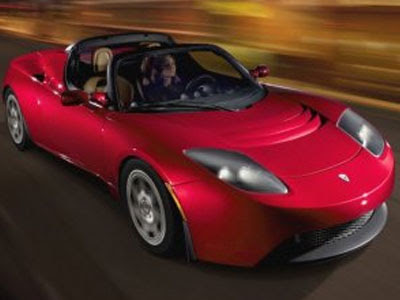
Tesla Motors's engineers have gone to great lengths to ensure that not only is the Tesla Roadster safe to drive, but also is safe when charging, at home or on the road.
The electric motor's efficiency rating is likely to be as high as 95 percent, while the internal combustion engine's efficiency is 20 percent or less. With this efficiency, the Tesla Roadster achieves the equivalent of 135 mpg.
That efficiency doesn't slow this sleek sports car down, either. Estimated 0-60 mph time is around four seconds, and with an electric motor
, the torque is instantaneous, throw-you-back-in-the-seat responsive.
Labels: Design Car, Electric Car, Sports Car, Tesla
The engine purrs like a kitten and roars like a lion at top speed. The interior of the car is everything you would expect from a sports car. This will be the next car on the top of every collector's list. Once rumored to be the "Blue Devil", the ZR1 Corvette offers comfort and charm all wrapped into one package. It will not be easy to produce a follow up Corvette that can match it's speed and style.
The carbon roof adds a touch of class to the 2009 Corvette ZR1 and only increases it's world class sports car appearance. The body style is designed for speed with the supercharged engine, there is not problem reaching top speeds on a good dry road. Chevy has created a new breed of luxury sports car that will surpass all others in its' class and price range.
The easy to reach dashboard controls has improved in the 2009 Corvette ZR1. The driver will easily be able to control the heat and cooling as well as all other controls without much effort when traveling at high speeds. The interior is a simplistic and refined while the exterior is bold and distinguished. The bucket seats have a stylish two color design that really sets it apart from other Corvettes. Rest assured, the interior is set up with the sophisticated driver in mind and has plenty of room for a comfortable ride.
The 2009 Corvette ZR1 was promised to be the best Corvette Chevy has ever produced and from the looks of the car and the horsepower, they have succeeded in delivering a car that is all that and more. The price of the 2009 Corvette ZR1 will be worth every penny based on the shear style & muscle this car provides. For die-hard Corvette collector, the MSRP is well worth what you will receive in return. For non-diehard Corvette individuals, you also will be nothing short of amazed by what this vehicle has to offer vrs sports cars within its' class. Don't believe me? Take a ride to our dealership and check it out for yourself. You will be happy you did!
The 2009 Corvette ZR1 has ABS, vented disc brakes in the front and the back. The driveline is rear wheel drive with tires that were developed just for the 2009 Corvette ZR1. They are Michelin Pilot Sport 2, P285/30ZR19 for the front and P335/25ZR20 for the rear. The front bakes have 6-piston calipers and the back has 4-piston calipers. The rotor diameter is 15.5 for the front and 15 for the back.

2009 Corvette ZR1 Engine The engine is a LS9 Supercharged V8 with a displacement of 376 cubic inches with 620 's for horsepower. The car has 595 pounds of torque. The clock and cylinder head are made from cast aluminum. The bore and stroke is 4.06 x 3.62 inches. The valve train has two valves per cylinder with an overhead valve. The fuel is delivered by sequential fuel injection and the engine has a compression ratio of 9.1 to 1. The recommended fuel is premium.
The transmission is a six speed manual transmission with a dual disc clutch. Gears ratios are 2.29 to 1 for first, 1.61 to 1 for second, 1.21 to 1 for third gear and 1.00 for fourth, 0.81 to 1 for fifth and 0.67 to 1 for sixth gear. Reverse is 3.11 to 1. The final drive ratio is 3.42 to 1. The clutch offers great clamping power with easy effort. The top speed can be achieved in sixth gear in this car. The twin disc clutch uses two discs to spread the torque of the engine load over a wider area. This also helps to dissipate the heat more and helps with extending the life of the clutch, which is needed in this sporty little car.
The length of the car is 176.2 inches with a height of 49 inches and 75.9 inches wide. The wheelbase is 105.7 inches. The fuel rank is 18 gallons and the engine holds 12.5 quarts of oil. The speedometer will read out up to 220 miles per hour, which is very easy to do with the supercharged engine and twin disc clutch.
The 2009 Corvette ZR1 comes with Bluetooth connectivity, navigation system, leather wrapped interior and leather trimmed sport seats that are power adjusted. The car does offer four different colors for the interior. The car will come with its own unique VIN number that will tell how many were built for the specific year and model. Come test drive one today!
Labels: Corvette ZR1, Sports Car, Super Car
Monday, October 12, 2009
Probably the hottest thing to happen to Frankfurt besides the BMW Concept X6, Bugatti unveiled the new EB 1.6 Veyron “Pur Sang” at the 62nd Annual IAA. Limited to only five units,
Weighing in at 1,888 kilogrammes, the Pur Sang produces 1,000 horsepower giving it a power / weight ratio of 4.15 lbs per horsepower. Top speed is clocked in at 248 mph.
Bugatti is presenting a special edition of the EB 16.4 Veyron limited to five worldwide – the Pur Sang – at the Frankfurt International Auto Show. The limited edition will be numerically consigned to the ranks of overall volume designed for 300 cars.
With the Bugatti EB 16.4 Veyron Pur Sang the company is continuing a tradition that produced icons like the T57 SC Atlantic and the numerous versions of the T41 Royale. Then as now Bugatti stands for a unique symbiosis of art, design and technology. Precisely this claim – manifested by company founder Ettore Bugatti and his son Jean – is reflected by the EB 16.4 Veyron Pur Sang, presented in a world premiere in Frankfurt. Reduced to pure design and technology, a car was created here that again was not the means to an end, but in fact had become a work of art in the sum of its parts. The EB 16.4 Veyron Pur Sang completely forgoes exterior paint.

The result is the EB 16.4 Veyron Pur Sang, a study in which carbon and aluminum blend into a unique two-tone color, although no paint is involved. “Interestingly,” explains Anscheidt, “the pure materials used to underscore even more clearly the unified extremes of this car. Power combined with comfort, technical structure and organic bodies, light and dark. A closer look at the details reveals the techincal logic behind the stylish appearance. The innovatively designed monocoque carries all main structural components, including the W16 engine, the passenger compartment, the crumple zone and the suspension. It’s precisely this foundation determined by function, made of carbon fiber coated with clear paint, that lies open in view at the heart of the Veyron. The use of aluminum linings is equally forceful. Through the bold and muscular coverings of the wheels as a perfectly designed wing they lend the car its stature and the unique body sculpture. Polished to a mirror finish, these perfectly curved shapes make the facinating surface reflections visible that characterize the Veyron.”
Designer piece with uncompromising performance
Lamborghini presents the ultimate driving machine among open-top two-seaters – the Reventón Roadster is a sports car of breathtaking fascination,
The Lamborghini Reventón is not destined to remain a one-off. Less than 20 Lamborghini friends and collectors will be able to own this extraordinary car and, naturally, enjoy the incomparable pleasure of driving it.
Open-top sports cars are a tradition at Lamborghini that stretches back over 40 years. In 1968, the company from Sant'Agata Bolognese built a Miura without a fixed roof as a one-off.
The Diablo Roadster appeared in 1995 with its targa roof anchored to the engine cover.
All Lamborghinis are created with an avantgarde approach to design; a fast-moving technical sculpture.
The powerful arrowhead form at the front, the mighty air intakes pulled way forward, the broad side skirts, the upwards opening scissor doors and the rear end with its menacing edges – the Roadster is clad in a design of maximum functionality and spectacular clarity.
Details set stylish accents, such as headlamps featuring bi-xenon units with LEDs forming the daytime running lights and indicators. The rear lamps are also equipped with LEDs.
Like the Coupé, the Reventón Roadster measures 4700 mm (185 in.) long. It has a wheelbase of 2665 mm (105 in.) and is 2058 mm (81 in.) wide and 1132 mm (45 in.)
mm (45 in.) high. The driver and passenger seating positions are low and sporty, separated by a substa
 ntial central tunnel.
ntial central tunnel.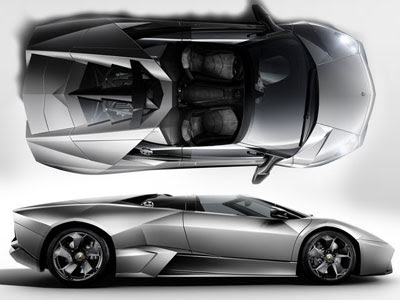
Behind the two seats are two hidden pop-up bars that deploy upwards in just a few hundredths of a second in the event of an imminent rollover. A fixed, horizontal wing-shaped member behind the seats bears the third brake light.
The design of the Roadster's long back is also quite distinct from that of the Coupé.
The engine bonnet is virtually horizontal and a total of four windows made from glass provide a view of the mighty V12 in all its technical elegance.
The base bodyshell of the Reventón is already so stiff that the Roadster requires only minimal reinforcement. It has a dry weight of only 1690 Kg (3,725 lbs.), just 25 Kg, (55 lbs.) more than the Coupé.
Like the Coupé, the cell of the Roadster is made from high-strength steel profile and carbon components joined with specialist adhesive and rivets.
The bodyshell is made almost entirely from carbon fiber elements, with sheet steel used only for the outer door skins.
The interior of the Reventón Roadster conveys the same powerful design as the exterior. The cockpit is structured with technical clarity, the interfaces arranged for functionality. Like a modern aircraft, the open two-seater no longer has classic analogue instrumentation – instead, information is delivered via two transreflective and one transmissive liquid-crystal displays.
The driver can switch between two modes at the touch of a button – one digital view with illuminated bars and one level with classic round dials, albeit with changing color graphics.
Centrally located at the top of the display is the G-force meter. It represents the intensity of the forces acting on the Reventón Roadster under acceleration, braking and heavy cornering; the same format used in Formula 1.
The instruments are mounted in a casing machined from solid aluminum which is housed in a carbon fiber dashboard. The interior displays uncompromisingly clean craftsmanship and features a host of carbon fiber applications – e.g. on the center tunnel – aluminum, Alcantara and leather.
The central panels and the seat cushions are perforated, with precision stitching gracing their outer edges.
The twelve-cylinder engine that powers the Reventón Roadster is a Lamborghini icon – and the technical feature that defines the character of the car.
It is one of the world's most powerful naturally-aspirated engines. With a compression ratio of 11 : 1 and a displacement of 6496 cc (396.41 in3,) it generates 670 PS (493 kW) at 8,000 rpm. Its maximum torque of 660 Nm (487 lb-ft) kicks in at 6,000 rpm.
The V12 engine is a masterpiece of Italian engineering. Two chains drive its four camshafts that, in turn, operate the 48 valves. Together with the three-phase adjustable intake manifold, the variable valve timing delivers a meaty torque build-up. Dry sump lubrication ensures that the hi-tech power unit has a constant supply of oil, even under heavy lateral acceleration.
The absence of the oil sump means a low mounting position – benefitting the car's outstanding handling characteristics.
The V12 catapults the Reventón Roadster from 0 to 100 Km/h (0 to 62 mph) in 3.4 seconds and onwards to a top speed of 330 Km/h (205 mph). It reacts he deep booming bass, the powerful mid-range and the exultant horn section play music that, once heard, can never be forgotten.
In classic Lamborghini style, the aluminum engine is mounted longitudinally in front of the rear axle, with the transmission ahead of it beneath the center tunnel.
This layout results in 58 percent of the overall weight being borne by the rear wheels – ideal for a powerful sports car.
This layout accommodates the Viscous Traction permanent all-wheel drive. Under normal conditions, it sends the vast majority of the driving force to the rear wheels.
Should they begin to spin, the central viscous coupling sends up to 35 percent of the power via an additional shaft to the front axle.
Limited-slip differentials are located there and at the rear axle with 25 and 45 percent lock respectively.
Lamborghini introduced the all-wheel drive principle with the Diablo. The reason back then was just as clear as it is today - four driven wheels grip far better than two, and the more powerful the engine, the greater the impact of this fundamental law of physics.
The Reventón Roadster keeps the extreme power of its engine in check with a running gear layout derived directly from motorsport. Each wheel boasts double wishbone suspension, with one spring strut on each side of the front axle and two each at the rear.
The front end of the car can be raised by 40 mm (about 1.6 in.) to protect the underside of the vehicle over potholes or on steep entrances into underground garages.
The open two-seater runs on 18-inch wheels. The front tires measure 245/35, while the rears are 335/30. Dedicated air channels in the bodyshell cool the four wheel brakes.
Carbon-fiber ceramic discs are standard – they have an extremely lightweight construction, operate with virtually no fade, are corrosion-free and achieve the highest service life.
Each disc has a diameter of 380 mm (~15 in.) and is gripped by six-piston calipers.
As fast as the open two-seater may be, its road manners are impeccable. Its performance limits are extremely high, yet effortless to control. And, on exiting a bend, all four wheels stick tenaciously to the asphalt.
The permanent all-wheel drive dovetails the car firmly with the road, delivering decisive benefits in traction and stability.
A further distinctive characteristic of the Reventón Roadster is its calm directional stability even at extremely high speeds – a feature that also turns fast highway stretches into sheer joy. Alongside the bodyshell design and the smooth underbody, which culminates in a powerfully formed diffuser, the rear spoiler carries responsibility for downforce. It deploys from the rear edge at about 130 Km/h (80 mph) and adopts an even steeper angle as of about 220 Km/h (136 mph). The entire aerodynamic concept – around and through the car – is radically laid out for performance.
The Design Department is directly linked to the neighbouring Ufficio Tecnico, ensuring rapid implementation of ideas. Lamborghini's capabilities also include the independent development of the complete electronic platform. This incorporates all control units – including those for the V12 and the innovative cockpit displays.
All units of the Reventón Roadster are being built on the Sant'Agata Bolognese production line, with perfect craftsmanship and to the highest levels of quality.
The Artega GT Coupe which was unveiled at the 2007 Geneva Motor Show is a small sports coupe designed by Henrik Fisker, the same designer responsible for Aston Martin's current lineup and also The Fisker Latigo CS and Fisker Tramonto based on the BMW 645i and Mercedes-Benz AMG SL55 respectivley.It will be produced in a limited series of 500 units per year starting from November 2007 and will be sold worldwide from the middle of 2008 for an approximate price of €75,000.
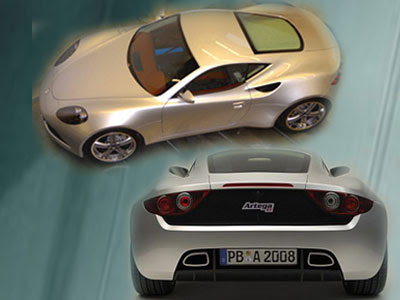
Power for the Artega GT Coupe comes from a 300 horsepower, mid-mounted, VW derived 3.6 litre V6 driving power to the rear wheels. This should give the Artega GT a 0-60 mph time of around 5 seconds and a 169 mph top speed.Enables a top speed of 270 km/h.
According to the first information revealed by Motor Authority and Auto, Motor und Sport, the Artega GT was developed by a team lead by former Rolls Royce boss Klaus Dieter Frers.
Artega GT - Design sketchThe vehicle dimensions are 3,950 x 1,880 x 1,180 mm - about the same of a B-segment car like the VW Polo but with an extremely low profile.

The Alfa 8c is a retro design powered by a Maserati V8 engine
Alfa Romeo are well known for producing flamboyant and beautifully styled cars, sometimes overlooking reliability. The 8c Competizione concept takes this philosophy to another level, and is one of the most stunning designs to come from the Italian manufacturer.
The flowing graceful lines of the 8c Competizione are a trait shared with another Alfa concept, the Nuvola. Both cars are inspired and shaped by Alfa Romeo models of the past, and their aesthetic design reflects this retro influence.
Labels: Alfa Romeo, Concept Car, Design Car, Prototype, Sport Car
Visually the MiTo GTA stands out from the standard car with its deeper and wider front grille, redesigned front bumper and repositioned Alfa Romeo badge which now sits just above the trademark triangular grille. In profile the sideskirts which help connect the new lower front and rear sections of the MiTo GTA are obvious, as are the Alfa Romeo 8c Competizione inspired air vents integrated into the body panels just behind the front wheel arches. At the rear a massive diffuser houses the twin round tailpipes while also helping to provide additional downforce.
The Alfa Romeo MiTo GTA is a performance version of the standard MiTo hatchback which features enhancements to the drivetrain, chassis and bodywork.
Powering the Alfa Romeo MiTo GTA is a turbocharged, 1.8 litre, 4 cylinder engine with variable valve timing which develops a very healthy 240 horsepower. The engine is also designed to work with the Alfa D.N.A. system which allows the driver to select the driving mode and adjust the performance to suit driving styles and conditions.
As well as creating a very stiff chassis for the MiTo GTA, the engineers completely revised the suspension, lowering it by about 20 mm. The steering is more direct, precise and sensitive, allowing the driver to obtain maximum feedback. The steering can be personalized by selecting different positions using the Alfa D.N.A. system to suit driver preferences.
Labels: Alfa Romeo, Sports Car
Sunday, October 11, 2009
The Ascari A10 lightweight carbon fiber body of less than 3,000 pounds is designed more for the racetrack than the road. There were only a few models of this fast car built, somewhere between 10 and 50, and although expensive, it promises incredible speed and power.The Ascari A10 sports car, developed by British manufacturers and similar to the Spanish GT version, is rated in the top ten supercars for 2006.
The power of the Ascari A10 comes from the modified BMW 5.0 liter V-8 engine, with the standard six-speed sequential transaxle, where the gearshifts operate as paddles, similar to other race cars. Additions and modifications to the engine, however, include cams with advanced timing, new rods, and pistons, as well as a dry sump lubrication system. It has the same steel sub-frame for the power train and rear suspension as the KZ1 sports car, but the height of the coil spring units can be adjusted hydraulically on front and rear. This is a unique feature, not found on most other supercars, where adjustments can only be made manually. Handling should be easier than before, with front and rear anti-roll bars installed, which are also adjustable. The builders of the A10, not to be outdone by their competitors and to ensure adequate braking at such high speeds, have installed ventilated ceramic disc brakes, with 6-pot calipers on the front and 4-pot calipers on the rear.
Ascari A10 rear view image
The exterior design of this luxury race car is more dramatic than its predecessor the KZ1, with wider headlamps, a different grille, and higher wheel arches to accommodate larger rear tires. In addition, it features a splitter in the front, fixed rear wing, and five detachable body panels for added race trace utility. Even with standard features such as a battery isolator, rollover cage, electric windows, and air conditioning, it still weighs 55 pounds less than the KZ1.
Klaas Zwart, the owner of Ascari, may well have designed the fastest exotic car in the UK, outperforming the Ferrari Enzo as is claimed. The A10 is certainly a rare and distinctive car, one that is much desired to own.
Labels: Ascari, Sports Car, Supercars
The Dodge Challenger uses Chrysler's LX platform also found in the Dodge Charger and Chrysler 300C sedans, but with a decidedly more sporty exterior design and dimensions which help disguise its ample overall size.
The engine is connected to a five speed automatic transmission driving the rear wheels.
Power for the Dodge Challenger SRT8 comes from a front mounted 6.1 litre HEMI V8 engine which manages to produce 425 bhp @ 6200 rpm, and 420 lb-ft (310 Nm) of torque @ 4800 rpm.
The exterior of the production Dodge Challenger has remained relatively faithful to the design of the original concept Dodge Challenger from 2006, with just a few minor tweaks and details altered including the addition of a black lip spoiler under the front bumper, the removal of the Dodge crosshair grille, repositioning of the side indicators, repositioned fuel filler, redesigned taillights and a small matt-black rear spoiler.
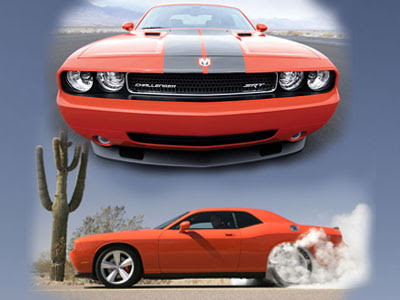
Dodge will offer the limited-edition 2008 Dodge Challenger SRT8 in three colors: HEMI Orange, Bright Silver Metallic and Brilliant Black Crystal Pearl Coat. Each two-door, rear-wheel-drive coupe will be produced with a numbered dash plaque and carbon fiberlike hood stripes.
Inside the 2008 Dodge Challenger many of the components are borrowed from the Charger and other Chrysler models, and the design has obviously been compromised in order to come in on budget.
Performance targets for the all-new 2008 Dodge Challenger SRT8 are impressive, and include a 0–60 mph time in the low 5-second range, 0–100–0 mph in less than 17 seconds, a ¼-mile elapsed time of less than 14 seconds, 60–0 mph braking distance of approximately 100 feet, and a skid pad performance of 0.88 g.
Release for the 2010 Chevrolet Camaro.
Built on GM’s new, global rear-wheel-drive architecture, the Camaro is offered in V-6- powered LS and LT models, as well as the V-8-powered SS. All models and powertrain combinations include fuel-saving six-speed transmissions.
Advanced powertrain technologies, including engines with direct injection and Active Fuel Management, enable a satisfying balance of exhilarating performance and good fuel economy.
Indeed, the 2010 Camaro exemplifies GM’s global development process. The design concept originated in the United States; engineering was directed by GM’s global rear- wheel-drive team in Australia; validation was conducted on roads around the world and assembly will take place at GM’s award-winning Oshawa facility in Canada.
Product highlights include:
Sleek styling with contemporary cues and 10 available exterior colors
LS and LT models offered with an advanced, 3.6L direct-injected V-6 engine with variable valve timing and a choice of six-speed manual or automatic transmissions
SS model offered with 6.2L V-8 – including fuel-saving Active Fuel Management on automatic-equipped combinations – and a six-speed manual transmission
Four-wheel independent suspension system, including a 4.5-link rear suspension
Variable-rate power steering with the rack mounted forward of the front axle for greater driver feel
Four-wheel disc brake systems standard on all models, including four-piston Brembo calipers on SS models
StabiliTrak stability control system and traction control standard on all models
Competitive/Sport modes for the stability system offered on SS models, including launch control on SS models equipped with the six-speed manual transmission
XM Satellite Radio
Additionally, details such as frameless door windows with automatic indexing glass contribute to the overall feeling of quality, substance and technical prowess.
With a design that is very faithful to the original concept, the 2010 Camaro is a 21st century sports car that acknowledges its heritage. A long front dash-to-axle and short rear deck give the Camaro classic proportions, while a sleek windshield profile, wheels pushed to the corners and muscular fender forms are modern elements that reinforce its advanced engineering – and give the car a decidedly aggressive stance.
Elements such as a forward-V shape at the front of the car and “gills” in the rear quarter panels are distinctly Camaro cues, as are the broad rear fender “shoulders.” Those elements make the new Camaro instantly recognizable, but their execution is smoothly integrated into the contemporary exterior form. A family of large, 18-, 19- and 20-inch wheels also contributes to the Camaro’s modern appearance.
A well-executed balance of heritage, modern design and attention to detail also characterizes the Camaro’s interior. A pair of deeply recessed instrument binnacles that
feature round gauges in square housings is a nod to classic Camaros, while an available ambient light package offers advanced LED light pipe technology to give the cabin a distinctive and inviting glow. Cloth upholstery is standard; heated leather-appointed seats are available.
Details such as large, chrome-trimmed controls, low-gloss surfaces and premium fabric or acrylic appliqués convey a richness that is unprecedented in previous Camaro models – and challenge its contemporary competitors. More great detail is evidenced in the available center-console gauge cluster, which takes its cue from a similar option on 1969 Camaros. It displays oil temperature, oil pressure, state-of-battery and transmission fluid temperature, all highlighted with modern LED backlighting.
Powertrains
An advanced, efficient 3.6L direct-injected V-6 with variable valve timing is standard on LS and LT models. direct injection technology helps the engine deliver more power through increased efficiency, while maintaining fuel economy and lowering emissions. That means less fuel is consumed and lower emissions generated – including a 25- percent drop in cold-start hydrocarbon emissions.
The Camaro’s 3.6L engine also employs variable valve timing to optimize performance and fuel economy across the rpm range. It is rated at an estimated 300 horsepower (224 kW) and 273 lb.-ft. of torque (370 Nm). A six-speed manual transmission is standard with the 3.6L engine; a Hydra-Matic 6L50 electronically controlled six-speed automatic, with TAPshift control, is available.
The high-performance Camaro SS is equipped with a powerful 6.2L V-8, with a choice of a six-speed manual or six-speed automatic transmission. Standard, manual transmission-equipped models receive the LS3 engine, estimated at 422 horsepower (315 kW) and 408 lb.-ft. of torque (553 Nm). The LS3 debuted on the 2008 Corvette and uses high-flow cylinder heads based on the Corvette Z06’s LS7 engine to enable great low-end torque and high-rpm power. It is paired with a TR6060 six-speed transmission.
A new, L99 V-8 engine is used on automatic transmission-equipped SS models. It is based on the LS3 and carries all of its high-performance design features, but also includes GM’s fuel-saving Active Fuel Management feature. It enables the engine to run on only four cylinders during light-load driving conditions, such as highway cruising, to improve fuel economy. The V-8 is estimated at 400 horsepower (299 kW) and 395 lb.-ft. of torque (535 Nm); and it is matched with a Hydra-Matic 6L80 six-speed transmission. This combination delivers an estimated 23 mpg on the highway.
Labels: Chevrolet, Sports Car
Along with the new engine package comes a re-designed retro-look interior for the Superblower. This features new circular Smiths instruments, mounted
on a central binnacle, new leather seats and new carpeting. There is a warning light cluster in front of the driver and a new steering wheel. There
is a stylish, hand-tooled aluminium gear knob and the startling yellow show car features a colour-coordinated instrument binnacle.
Labels: AC Superblower, Sport Car
Saturday, October 10, 2009
The Audi S5 Cabriolet which was revealed in December 2008 is the replacement car for the S4 Cabriolet, a model which will be discontinued.
The engine develops 333 hp and 325 lb-ft of torque. The transmission is handled by either a 6 speed tiptronic gearbox or a 7 speed double-clutch automatic. The quattro all-wheel-drive system features a 40/60 front/rear torque split.
Like the S5 Coupe the S5 Cabriolet features cosmetic upgrades which differentiate it from the standard A5 Convertible. The radiator grille is finished in platinum grey and fitted with vertical chrome inlays. The front and rear bumpers are modified and have an exaggerated design with more aggressive air inlets. The windscreen surround and mirror housings are finished in an aluminum-look material which immediately identifies the model as belonging to the Audi 'S' family.
Inside the Audi S5 Cabriolet are a pair of sports seats up front and a sports steering wheel. The cloth convertible top features Audi Acoustic Roof technology for a quiet interior.
The Aston Martin Rally GT, based on the Aston Martin V8 Vantage, was developed by Aston Martin Racing and automotive engineering specialists Prodrive (see Prodrive P2) for use in rally racing.
The Aston Martin Rally GT was extensively engineered by Prodrive, and like the DBRS9 based on the Aston Martin DB9, the Rally GT is based on a standard road car's chassis. However the Rally GT has been fitted with a Prodrive rollcage, a tuned and more responsive version of the standard car's 4.3 litre V8, and new competition Eibach springs and adjustable EXE-TC dampers. The 6-speed transmission is the same unit found in the road car, but it can be upgraded to a close ratio dog engagement gearbox specifically developed for the Aston Martin Rally GT.
Labels: Aston Martin, RacingCar, Rally GT, Spors Car
2010 BMW Z4 Roadster is the first all-new, top-to-bottom redesign of the Z4 model which was originally launched in 2002.
The 2010 Z4 has a sleeker profile and more subtle "flame surfacing" body lines than the previous model. In general the car has a more balanced and matured appearance to it. That's not to say the roadster has lost any of its visual appeal, it's just been refined and tweaked to fit better with the current BMW styling direction.
The front end of the 2010 BMW Z4 has undergone the most obvious transformation. The headlights are thinner and sweep back further into the wheel arches, and the trademark BMW kidney grilles have been elongated to better match the headlights. Down the sides the controversial styling slash which intersected the fender mounted BMW badge has been replaced by a more conventional panel. The BMW badge is now fitted just forward of the doors and adjacent to the side indicators which are cleverly integrated into the metalwork.
Unlike the original Z4 Roadster which used a fabric roof, the 2010 model is fitted with a retractable metal roof which folds away neatly into the rear storage area. 20 seconds is all it takes for the roof to electronically raise or lower itself.
The 2010 BMW Z4 is offered with a choice of three different engine options. The Z4 sDrive23i model is equipped with a 2.5 litre inline 6 cylinder which develops 204 horsepower. The Z4 sDrive30i is fitted with a 258 horsepower / 228 lb-ft of torque naturally aspirated 3.0 litre 6 cylinder. The top level Z4 is the sDrive35i version which is powered by a twin-turbocharged, 3.0 litre, inline 6 cylinder which pumps out 306 horsepower. With this engine the Z4 can hit 62 mph in just 5.1 seconds. The Z4 can be fitted with either a 6 speed manual gearbox or a 7 speed dual-clutch transmission.













